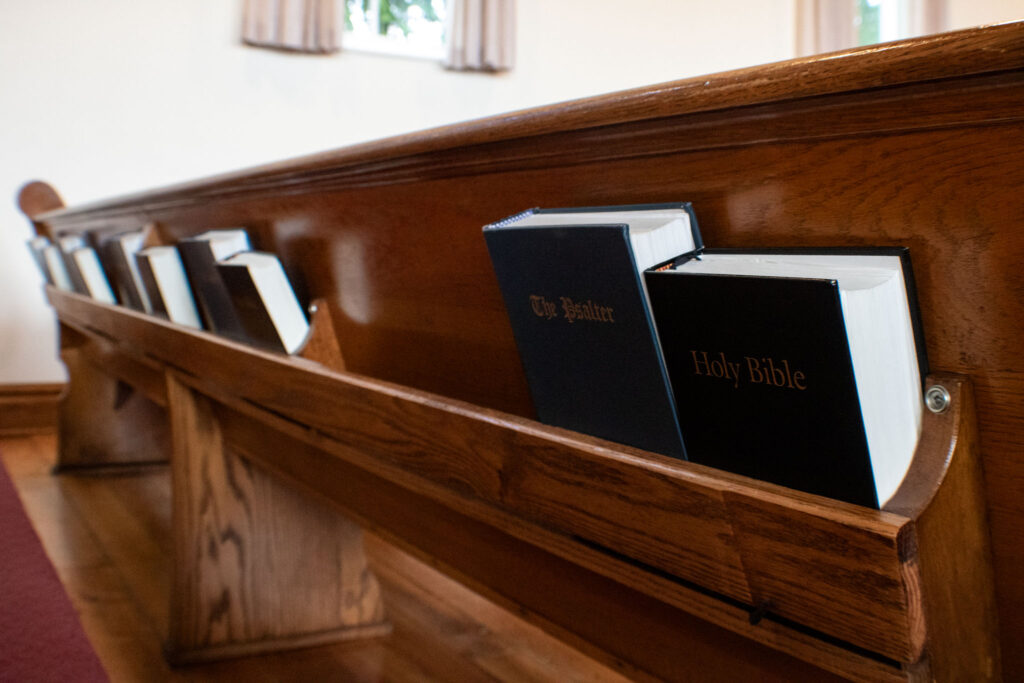
The Free Reformed Churches of North America desire to be Biblical and Reformed Churches in North America. We treasure the God-given insights of previous generations especially as they are expressed in our confessions (Apostolic, Nicene, and Athanasian Creeds; Belgic Confession, Heidelberg Catechism, and Canons of Dort). We recognize we have many shortcomings, yet we strive to see these truths known, embraced, experienced and practiced today. Our greatest desire is to see the grace and glory of the Triune God magnified in our congregations and through them to many others around the world.
OUR CREEDS
After the Catechism was approved by a Heidelberg Synod in January 1563, three additional German editions, each with small additions, as well as a Latin translation, were published the same year in Heidelberg. The fourth edition is regarded as the official text of the Catechism and is used as a basis for the English translation printed on the following pages.
The oldest of the doctrinal standards of the Free Reformed Church is the Confession of Faith, popularly known as the Belgic Confession.
The Decision of the Synod of Dort on the Five Main Points of Doctrine in Dispute in the Netherlands is popularly known as the Canons of Dort (or the Five Articles Against the Remonstrants). It consists of statements of doctrine adopted by the great Synod of Dort which met in the city of Dordrecht in 1618-1619. Although this was a national Synod of the Reformed Churches of the Netherlands, it had an international character, since it was composed not only of sixty-two Dutch delegates, but also of twenty-seven foreign delegates representing eight countries.
The Apostle’s Creed was not written by the apostles; it is the culmination of several centuries of reflection on the meaning of the Christian faith. The ancient church used this Creed to identify believers, to instruct new converts, and to provide a unifying confession of faith for worship and liturgy.
I. I believe in God the Father, Almighty, Maker of heaven and earth:
II. And in Jesus Christ, his only begotten Son, our Lord:
III. Who was conceived by the Holy Ghost, born of the Virgin Mary:
IV. Suffered under Pontius Pilate; was crucified, dead and buried: He descended into hell:
V. The third day He rose again from the dead:
VI. He ascended into heaven and sitteth on the right hand of God the Father Almighty:
VII. From thence he shall come to judge the Quick and the dead:
VIII. I believe in the Holy Ghost:
IX. I believe a holy catholic Church: the communion of saints:
X. The forgiveness of sins:
XI. The resurrection of the body:
XII. And the life everlasting. Amen.
The Nicene Creed is the church’s response, partly based on the Apostles’ Creed, to a particularly dangerous set of teachings – Arianism – which would have masked the identity of Christ. And, because it’s phrases are meant more to defend than explain the faith, the Nicene Creed has always been used for teaching rather than worship.
I believe in one God, the Father Almighty, Maker of heaven and earth, and of all things visible and invisible;
And in one Lord Jesus Christ, the only-begotten Son of God, begotten of his Father before all worlds; God of God, Light of Light, very God of very God, begotten, not made, being of one substance with the Father, by whom all things were made.
Who, for us men for our salvation, came down from heaven, and was incarnate by the Holy Spirit of the Virgin Mary, and was made man; and was crucified also for us under Pontius Pilate; He suffered and was buried; and the third day he rose again, according to the Scriptures; and ascended into heaven, and sitteth on the right hand of the Father; and He shall come again, with glory, to judge the quick and the dead; whose kingdom shall have no end.
And I believe in the Holy Ghost the Lord and Giver of Life; who proceedeth from the Father and the Son; who with the Father and the Son together is worshiped and glorified; who spake by the prophets.
And I believe one holy catholic and apostolic Church; I acknowledge one baptism for the remission of sins; and I look for the resurrection of the dead, and the life of the world to come. Amen.
The Athanasian Creed is that latest of the ecumenical creeds, dating back to the early dark ages. Though seldom used in worship, it is one of the clearest definitions of the Trinity and the incarnation ever written.
Article 1: Purpose and Content of the Church Order
For the maintenance of good order in the Church of Christ it is necessary that there should be: offices, assemblies, supervision of doctrine, sacraments and ceremonies, and Christian discipline; of which matters the following articles treat in due order.

RESOURCES
Our congregation believes that all things written in the Holy Bible to be true. Our church uses the King James Version. During corporate worship we sing from the Psalter.
